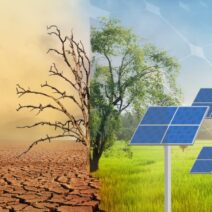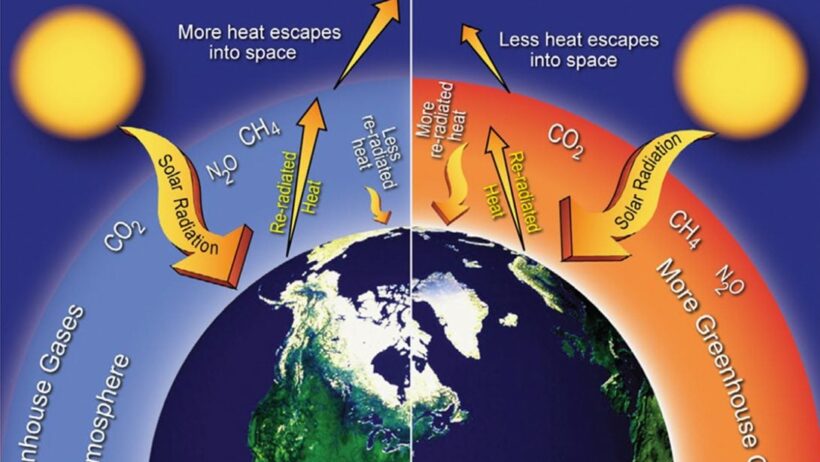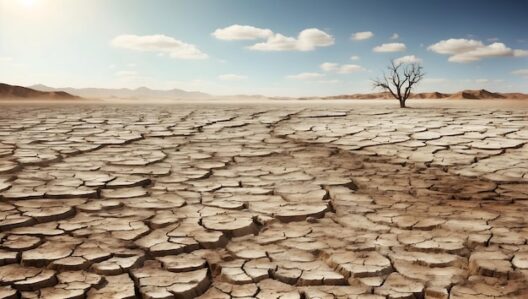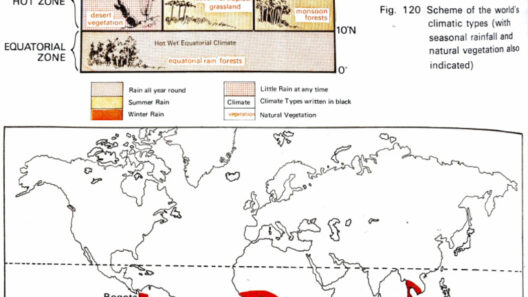The intricacies of climate change are complex, consisting of multivariate influences that interplay to create the environmental crises we face today. At the forefront of the dialogue surrounding climate change are the leading causes that can be parsed into two primary categories: natural phenomena and human-induced activities. Understanding this dichotomy is pivotal for formulating effective strategies for mitigating climate change and fostering an environmentally-conscious mindset.
Natural causes of climate change have existed on Earth for millennia, driven by the intrinsic dynamics of the planet’s systems. These encompass processes such as volcanic eruptions, variations in solar radiation, ocean currents, and tectonic plate movements. Volcanic eruptions can disperse massive quantities of carbon dioxide and other greenhouse gases into the atmosphere, albeit temporarily. However, their impact pales in comparison to the long-term effects induced by anthropogenic actions. Solar radiation variations—occasional fluctuations in the sun’s output—also play a role, albeit not enough to account for the accelerated warming observed since the 20th century. In addition, the Earth’s natural cycles, particularly the Milankovitch cycles, can affect climate over lengthy periods, but again, modern ramifications are largely attributable to human activities.
In stark contrast, the human-made causes of climate change have burgeoned dramatically since the Industrial Revolution. The combustion of fossil fuels remains one of the most significant contributors. Carbon dioxide, released through burning coal, oil, and natural gas for energy and transportation, has surged to levels not seen in millions of years. This relentless increase in greenhouse gas emissions, predominantly carbon dioxide, is responsible for the greenhouse effect, wherein heat is trapped in the atmosphere, leading to global warming.
Another pivotal factor is deforestation. The clearing of forests for agriculture, urban development, and other human activities not only reduces the number of trees that can absorb atmospheric carbon dioxide but also releases stored carbon emissions when those trees are cut down or burned. This dual impact exacerbates climate change, highlighting the interconnected nature of various environmental issues. Alongside deforestation, land-use changes contribute significantly to the carbon footprint, as agricultural practices and livestock farming produce substantial methane—a potent greenhouse gas—while altering the land’s natural carbon balance.
Industrial activities also merit considerable scrutiny. Manufacturing processes, particularly in sectors such as cement production and chemical manufacturing, emit significant quantities of greenhouse gases. These industries play a crucial role in the economy; however, their environmental repercussions compel a reevaluation of operational practices. The challenge lies in advancing technological innovations that minimize emissions while maintaining productivity.
Additionally, waste management practices contribute substantially to climate change. Landfills generate methane through the decomposition of organic waste—a gas that is, by some estimates, 25 times more effective than carbon dioxide at trapping heat in the atmosphere over a 100-year period. Improving waste management through recycling, composting, and waste-to-energy initiatives is essential for mitigating these emissions.
It’s also imperative to consider the role of the transportation sector, which is predominantly fueled by fossil fuels. The increase in vehicle ownership worldwide, coupled with the lack of efficient public transport systems in many regions, has resulted in soaring emissions from cars, trucks, and airplanes. Transitioning to alternative fuels and enhancing public transportation infrastructure can play a critical role in reducing reliance on carbon-intensive means of travel.
Furthermore, agricultural practices are inextricably linked to climate change. The agricultural sector not only accounts for a significant portion of greenhouse gas emissions—primarily methane and nitrous oxide—but is also susceptible to the effects of climate change itself. A vicious cycle emerges as rising temperatures and shifting precipitation patterns threaten crop yields and food security. Sustainable farming practices, including agroforestry and permaculture, can offer solutions to mitigate these impacts while promoting biodiversity and soil health.
The intersectionality of the various causes of climate change introduces a layer of complexity to the issue, complicating efforts to counteract its effects. The necessity of interdisciplinary approaches is salient. Scientists, policymakers, activists, and industries must collaborate to devise comprehensive strategies that address both the natural and anthropogenic factors contributing to climate change. Such collaboration could spur innovations in carbon capture and storage technology, promote renewable energy adoption, and facilitate policies geared towards sustainability.
Yet, the gravity of the climate crisis cannot be overstated. Rising sea levels threaten coastal communities, extreme weather events become increasingly frequent, and biodiversity loss accelerates at an alarming rate. Each of these phenomena is intrinsically linked to climate change, underscoring the urgency with which we must act. Public awareness and engagement are paramount; education can be a powerful catalyst for change, empowering individuals to establish a more sustainable lifestyle and advocate for impactful legislation.
In conclusion, while natural phenomena have undoubtedly played a role in shaping Earth’s climate history, the predominant influence driving current climate change is anthropogenic. The intertwining of human activity with the Earth’s systems necessitates a paradigmatic shift away from fossil fuel dependence and destructive practices towards a more sustainable, resilient future. By acknowledging the profound impact of our choices on the environment, we cultivate not only a deeper understanding of the climate crisis but also a commitment to fostering meaningful change. The resultant journey is not merely about reducing emissions; it centers on reimagining our relationship with the Earth and embracing a collective responsibility to preserve it for generations to come.








